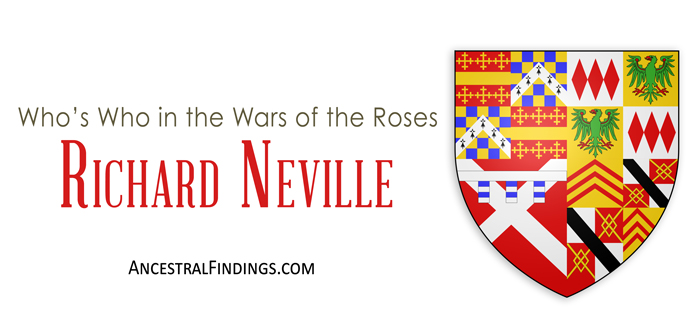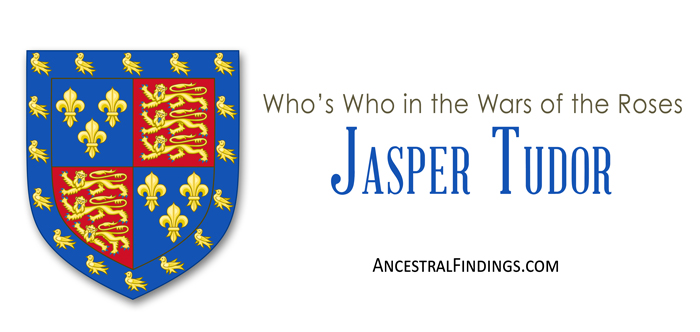Also known as George, Duke of Clarence, George Plantagenet was one of three York brothers (sons of the Duke of York) who believed they were destined to win the throne of England together, and be a united front as the nation’s guardians. They believed this because of an atmospheric illusion they saw in the sky before a pivotal battle in the Wars of the Roses that made it appear as if there were three suns. These brothers believed they each represented one of those suns, and would, together, usher in a new age for England under a new royal dynasty.
Born October 21, 1449, to Richard, Duke of York, and Cecily Neville, George was originally one of four sons of the couple who survived to adulthood. The second son, Edmund, died in battle along with their father, shortly before the Yorks saw their most important victory yet in the Wars of the Roses. After losing their father and Edmund, that left only three York brothers… Edward, George, and Richard. As the eldest, Edward became king when the Yorks had their decisive victory. George and Richard were instrumental in securing that victory for Edward, and they worked hard on their brother’s behalf to keep his rule secure and accepted by the English people.
However, George was spoiled and arrogant. From the beginning, he is thought to have been their mother’s favorite son, if not child (as he and his brothers had many sisters). Cecily always favored George over her other boys, even Edward the king. So, George grew up with a sense of entitlement his brothers might not have had. This made him a problem to his kingly brother pretty soon after he began his rule.
George was always jealous of Edward, who became King Edward IV, but he was unquestioningly loyal to him at the beginning of his reign. This loyalty seems to have begun to waver when Edward revealed he had married one of his own subjects in secret, the Lady Elizabeth Woodville. George became jealous over the influence Elizabeth and her many relations had on the king once the marriage was made public. When their cousin, Richard Neville, a man who almost single-handedly made conditions perfect for Edward to take the throne, became infuriated at the secret marriage, when he had been working hard to secure marriage to a foreign princess for the king, he believed since he had put Edward on the throne, he could remove him. As the next eldest brother, Richard looked to George as the potential new king.
With his cousin, Richard whispering promises of power in his ear, George demanded his brother Edward allow him to marry Richard’s daughter, Isabel. Edward refused because he knew George had the potential to be problematic. He wanted to marry George to a foreign noblewoman or minor royal and get him out of the country. George was furious at the royal refusal of his marriage request, not only because Isabel and her sister, Anne, were heirs to a vast fortune, but because he was not used to hearing the word, “No,” thanks to their mother’s indulgence of him from birth. So, with his cousin Richard’s encouragement, George left for France with Richard and his family and married Isabel abroad.
Richard promised George the throne, and George’s mother Cecily seems to have gone along with the plan. She said nothing when Richard and George started a rumor that the king was illegitimate, the result of an affair with a French archer Cecily had early in her marriage. If Cecily had not agreed with the plan to replace one of her sons on the throne with another, she, as a noblewoman with a reputation to protect, would likely have spoken out against the rumor. Instead, she remained quiet, and may even have encouraged George herself in speaking it.
A planned invasion of England with an army that would support George did not take shape as everyone hoped in France. George fully planned to march against his brother, the thought of being king too enticing to resist. He was bitterly disappointed when he found not enough military force would support him to make him a viable candidate for the throne. Leaving Richard and the rest of Richard’s family in France, George went back to England and reconciled with his brother.
Queen Elizabeth Woodville was against this reconciliation, as one of the initial skirmishes George had been involved in with his cousin Richard, before they left for France, resulted in the capture and beheading without trial of her father and one of her brothers by Richard and George’s small army, on their orders. An illegal execution, yes, but the king insisted George was better as an ally than an enemy and forgave him.
George never made any secret of his dislike of the queen, however, and, despite the reconciliation, he remained aloof and distant with her and the king, ruling his own large estate and the people on it as if he were their king instead of Edward. When his wife, Isabel, died a few months after giving birth to their fourth child, he accused a local woman of poisoning her and had her executed without a trial, on his orders. This illegal act, along with George’s continuing to talk about Edward’s supposed illegitimacy, and his intimations that the queen and her mother may engage in witchcraft, eventually forced Edward’s hand. As a brother, he could deal with George’s bad attitude, but as a king, he could not. He had to set an example for the people of England that the rule of law applied to everyone, regardless of who they were.
Feeling he had no other choice, Edward ordered George to be executed. It is not known how their mother, Cecily, reacted, but as George was her known favorite child, it can not have been a pretty scene when she found out the news that one of her sons was going to have another one killed. Edward did afford George the dignity of a private execution, within the tower, with no crowds watching. Legend says George was allowed to choose his own method of execution, and that he chose drowning in a barrel of his favorite Malmsey wine. There is some credible historical evidence that this may have been true. However, since it was done in private and no records survive (or have been found) describing it, many historians believe George was simply beheaded privately within the Tower.
As much as George wanted to be king, it is ironic that his older and younger brother both became kings, while he himself did not. After Edward’s death a few years after George’s, their youngest brother, Richard, declared Edward’s marriage to Elizabeth Woodville illegitimate, and their children bastards who were ineligible for the throne, then took the throne himself as King Richard III. Richard was the only king for two years, however, before being killed in battle against Henry Tudor, who married one of Edward’s daughters and began the Tudor dynasty. Because every monarch who has sat on the English throne since that time has been descended from Henry Tudor and his wife through their daughter, Margaret, it means every monarch has also been directly descended from Edward IV and Elizabeth Woodville.
George and Isabel do have descendants today, but they are not royalty. Two of their children died as infants, and their surviving son was put in the Tower by Henry Tudor when he was ten years old, because he was a legitimate royal claimant whose right to the throne was arguably greater than Henry’s. Henry had him executed fourteen years later, for no other reason than being someone the people liked and supported, and might get behind to put on the throne in Henry’s place.
That left George and Isabel’s daughter, Margaret. Margaret was married off into a family who was loyal to the Tudors and had many children. While she was the nanny to her young cousin, the future Henry VIII, for most of his childhood, and again to Henry VIII’s daughter, Mary, the cousin who loved her became paranoid and turned on her in her old age, because of one of her sons not supporting his marriage to Anne Boleyn. He had Margaret, who was in her 60’s at the time and had never been anything but loyal to Henry, executed because he could not execute her son, who was out of the country. Still, Margaret’s family went on, and, because of this, so did George and Isabel’s line.
The man who wanted to be king has descendants who live to this day. While his brother Richard III left no descendants, and the descendants of his brother, Edward IV, are still royal, George’s descendants have long since passed from even the noble families and into commonality. There are people who believe George’s descendants are the rightful heirs to the throne, because Henry Tudor’s line was not royal or even noble on his father’s side, and barred from inheriting the throne on his mother’s side, so the next rightful heirs should have been George’s descendants. The elder representative of George’s line today is a regular, common man working in the building trades and living in Australia. Unlike his distant great-grandfather, George Plantagenet, he expresses no royal ambitions but has joked publicly about charging the queen rent for living in his castles.






